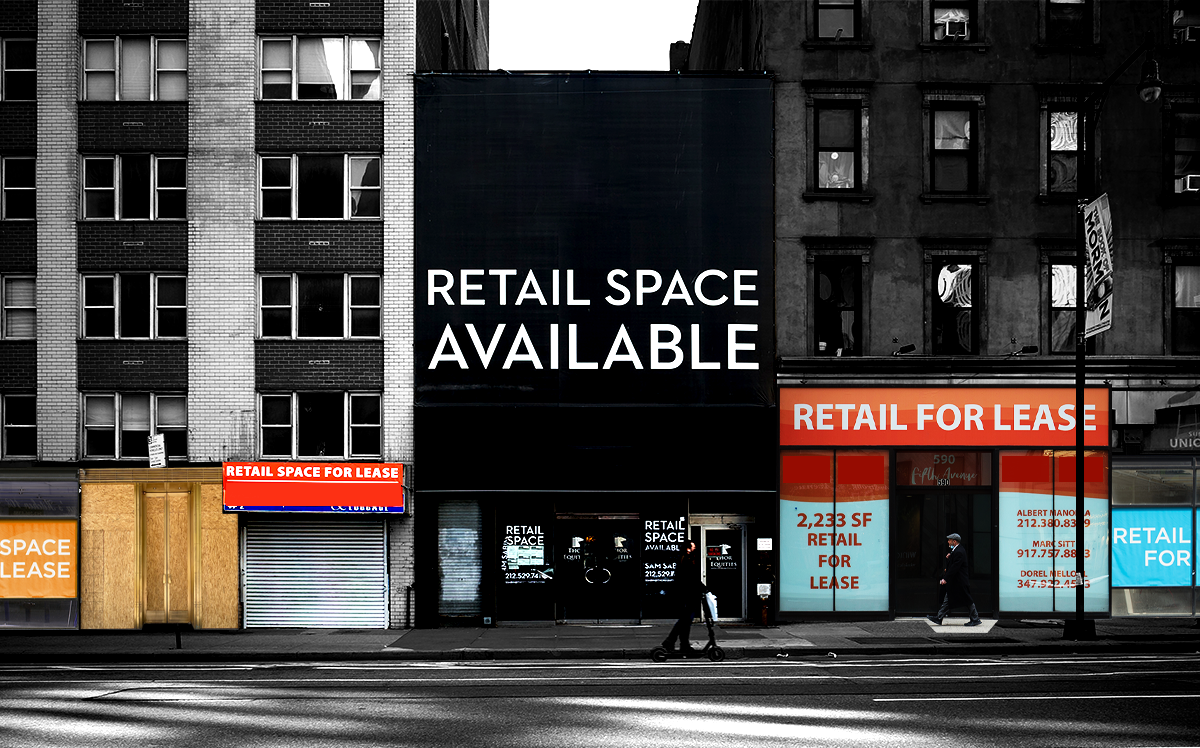 Big month for retail sales bodes well for landlords
Big month for retail sales bodes well for landlords
Trending
Lost without office workers, Midtown storefronts struggle to find tenants
Retail vacancies approached 30% this summer, far outpacing city’s residential areas

As resurgent Covid caseloads kept New York City’s office workers at home through the summer, retail corridors that depend on their foot traffic struggled to fill empty storefronts.
Just under 30 percent of retail storefronts in the Grand Central and Midtown East business districts — home to 15 percent of the city’s office stock — remained vacant this summer, more than double the 10 to 15 percent vacancy rates seen before the pandemic, according to a report by the Real Estate Board of New York.
Madison Avenue also saw a jump in vacancies, with 28 percent of storefronts unoccupied, up from 19 percent in 2018.
In comparison, residential neighborhoods in Manhattan, Brooklyn and Queens had storefront vacancies ranging from 14 percent to 20 percent — which, while still elevated, were much closer to pre-pandemic rates.
“It’s clear from these findings how critical the link is between the recovery and success of the City’s once vibrant retail sector and a full, safe return of office workers,” REBNY President James Whelan said in a statement.
Read more
 Big month for retail sales bodes well for landlords
Big month for retail sales bodes well for landlords
 August retail rent payments close to 2019 levels
August retail rent payments close to 2019 levels
It wasn’t just retail landlords who were reeling. Office asking rents fell 4.2 percent in the second quarter, while the office vacancy rate hit a 30-year high of 18.3 percent, according to a separate report by the Office of the State Comptroller.
The total market value of the city’s office buildings, estimated at $172 billion in fiscal year 2021, fell nearly 17 percent in the fiscal 2022 assessment, the first decline in total office property market values in at least two decades. Of the $1.7 billion in property tax revenue the city stands to lose in fiscal 2022, which began on July 1, more than half will be driven by the drop in office building valuations.
According to the REBNY report, the city lost 631,000 jobs last year, with leisure and hospitality accounting for 250,000 losses. The retail sector shed over 67,000 jobs.
Only 49 percent of the city’s jobs have since returned, according to the report, leaving New York well behind the national recovery rate of 90 percent.
Still, those seeking signs of recovery should look below ground: Subway ridership had returned to nearly 50 percent of its pre-pandemic levels by early September, up from 20 percent in the spring of last year.




